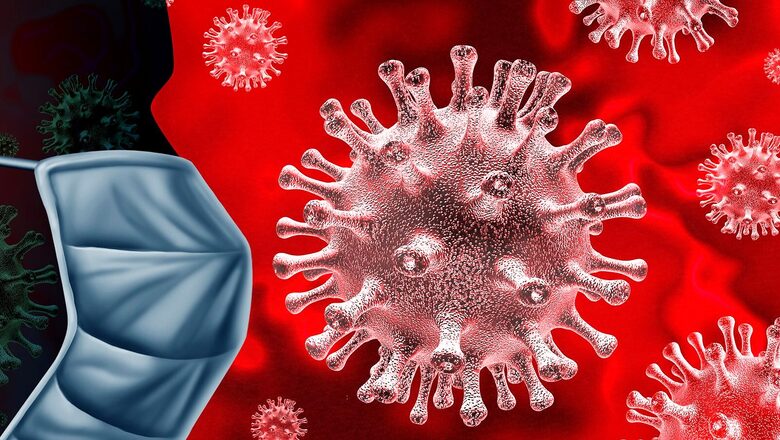
views
As Covid-19 cases continue to surge in India due to community transmission of the Omicron variant, the newly-discovered sub-variant, termed BA.2, has emerged as a dominant virus strain in European and Asian countries, triggering fears regarding the future waves of the pandemic.
The UK Health Security Agency (UKHSA) identified 426 cases in Britain in the first ten days of this month and has indicated the latest variant has been detected in some 40 other countries, accounting for a majority of most recent cases in some nations including India, Denmark and Sweden.
BA.2 Found in 80% of Kolkata Samples
The report comes after the sub-lineage of the Omicron variant was found in 80 per cent of samples in Kolkata. The samples were sent for genome sequencing between December 22 to 28 and nearly 80 per cent of them were found BA.2 positive with CT level below 30, indicating high viral load.
Earlier in December, the government had decided to send all positive samples with CT value under 30 for genome-sequencing to detect community transmission of Omicron. However, the decision was reversed a week later when it was clear that community transmission of Omicron had begun.
On Sunday, the INSACOG officially confirmed the Omicron variant is in the community transmission stage in India and has become dominant in multiple metros where new cases have been rising exponentially.
However, the government has warned that the screening of BA.2 lineage is likely to give false negatives no such case has been confirmed in India to date. “Omicron is now in community transmission in India and has become dominant in multiple metros, where new cases have been rising exponentially. BA.2 lineage is in a substantial fraction in India and S gene dropout based screening is thus likely to give high false negatives,” it said.
S-gene drop-out is a genetic variation like that of Omicron. “The recently reported B.1.640.2 lineage is being monitored. There is no evidence of rapid spread and while it has features of immune escape, it is currently not a variant of concern. So far, no case has been detected in India,” the INSACOG said in its recent bulletin.
‘Stealth version’ of Omicron
The BA.2 strain commonly known as the ‘stealth version’ can be detected only through genome sequencing and constitutes one of the sub-lineage of the Omicron variant which has now been split into three sub-types namely BA.1, BA.2, and BA.3.
While the BA.2 has yet to be designated a variant of concern, French epidemiologist Antoine Flahault told AFP countries have to be alert to the latest development as scientists ramp up surveillance. “(France) expected a spike in contaminations in mid-January: It didn’t happen and perhaps that is due to this sub-variant, which seems very transmissible but not more virulent” than BA.1, he observed.
“What interests us is if this (sub-variant) possesses different characteristics” from BA.1 in terms of contagiousness and severity, France’s public health agency said Friday.
Effectiveness of Vaccines
However virologist at Imperial College, London, Tom Peacock said, “Very early observations from India and Denmark suggest there is no dramatic difference in severity compared to BA.1,” and noted that the newly discovered strain is unlikely to raise question on effectiveness of existing vaccines.
He observed that there is likely to be minimal differences in vaccine effectiveness against BA.1 and BA.2 and is unlikely to lead to a second wave of Omicron. “Several countries are near, or even past the peak of BA.1 waves. I would be very surprised if BA.2 caused a second wave at this point. Even with slightly higher transmissibility, this absolutely is not a Delta-Omicron change and instead is likely to be slower and more subtle,” he forecast.
Meanwhile, a recent study from the US Centers for Disease Control and Prevention showed after Omicron became dominant, the vaccine efficacy estimate severe outcomes i.e. hospitalisations between 14-179 days after two doses was 81 per cent, 57 per cent after more than 180 days from dose two and 90 per cent 14 or more days after dose three or booster jab.
(With inputs from agencies)
Read all the Latest India News here




















Comments
0 comment